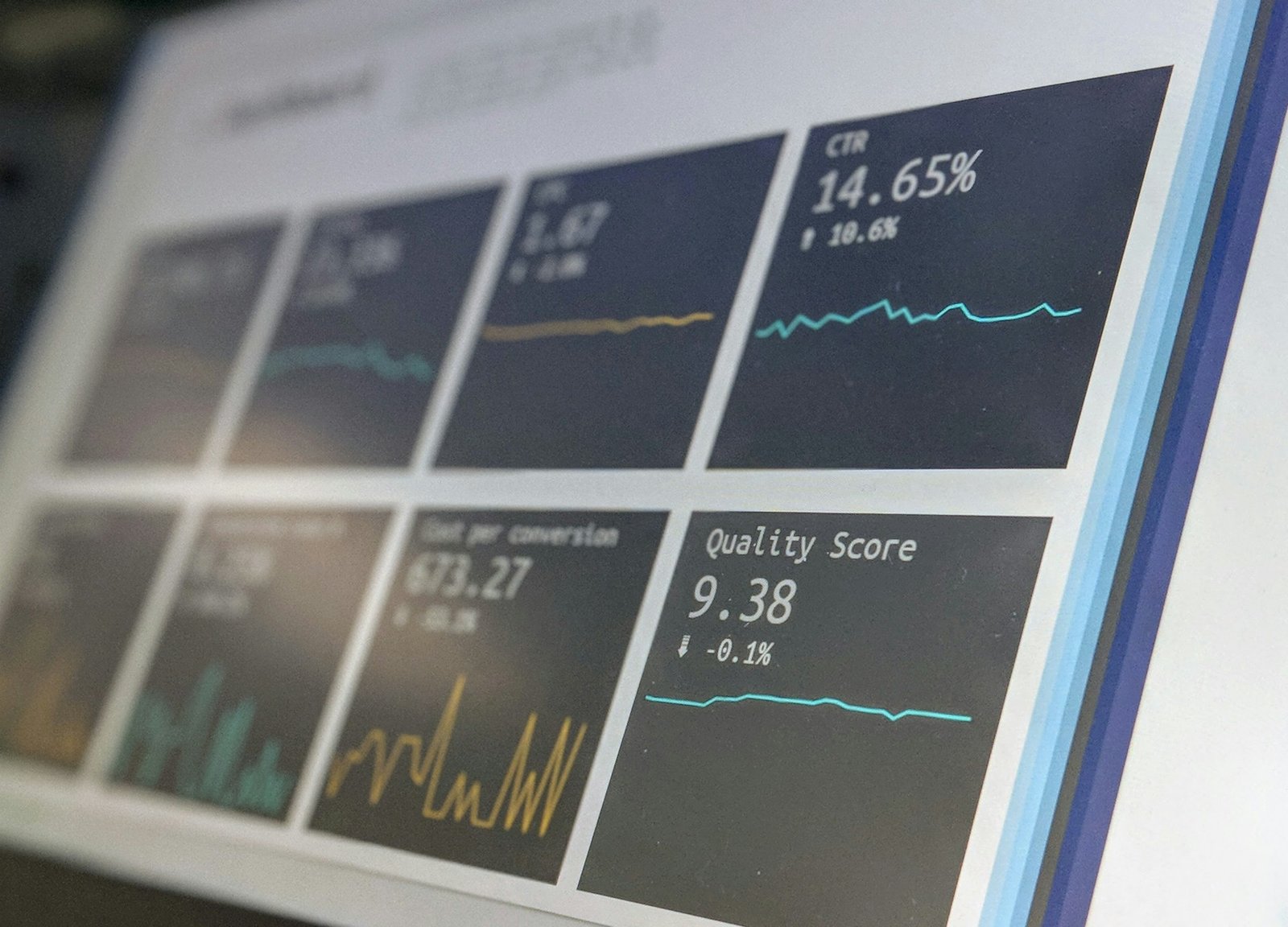
Success in marketing isn’t just about putting in effort—it’s about making sure that your efforts are yielding meaningful results. For Managed Service Providers (MSPs), this means tracking and analyzing specific key metrics that reveal whether your marketing efforts are effectively reaching the right audience, generating qualified leads, and ultimately driving business growth.
But what metrics should you focus on? Many MSPs get caught up in vanity metrics like overall website traffic or social media likes, which don’t necessarily translate into more business. Instead, you need to track and analyze metrics that provide insight into content generation, impressions, website traffic, customer reviews, and qualified leads. These metrics will give you a clearer picture of how your marketing efforts are performing and help you adjust your strategy to get the desired results.
In this blog, we’ll explore the core key metrics every MSP should monitor to effectively tweak and optimize their marketing strategy. By focusing on these areas, you’ll be able to ensure that your marketing is targeted, results-driven, and continually improving.
1. Content Generation: Measuring the Fuel Behind Your Marketing
Why Content Matters
Content is the backbone of modern digital marketing. Whether it’s blogs, social media posts, case studies, or videos, the content you produce plays a crucial role in driving traffic, building brand authority, and nurturing leads. For MSPs, content that addresses IT pain points—such as cybersecurity, data compliance, or downtime prevention—can educate prospects and position your business as a trusted solution provider.
If you’re not generating enough high-quality, relevant content, you’re missing opportunities to engage your audience, answer their questions, and guide them toward becoming clients.
Core Metric to Track: Content Volume
Track the number of content pieces you’re generating each month. Set goals for the types of content you’ll produce, whether that’s a set number of blog posts, social media updates, or case studies. This will ensure you’re consistently feeding your marketing funnel with fresh, valuable material.
- Blog posts per month: How many educational blog posts are you publishing? Aim for at least 2-4 per month to maintain relevance in search engines and provide value to your audience.
- Social media posts: How often are you engaging on platforms like LinkedIn or Twitter? Posting regularly helps keep your brand top of mind for potential clients.
- Case studies and testimonials: These are crucial for showcasing your success and building trust. Aim to publish new case studies as soon as new projects wrap up successfully.
Actionable Tip: Create an editorial calendar to ensure you consistently produce new content. If content creation is sporadic or inconsistent, it’s harder to build a strong presence and authority in your field.
2. Impressions: Tracking Your Reach and Awareness
Why Impressions Matter
Impressions measure how many times your content is displayed to potential customers. They provide insight into brand visibility and awareness—key factors in getting in front of decision-makers who may need your services but aren’t yet familiar with your MSP.
Impressions are a great way to gauge how well your content is performing across platforms like Google search results, social media, and paid ads. However, it’s important to remember that impressions alone don’t guarantee engagement or conversions. They’re just the first step in the journey of turning a visitor into a qualified lead.
Core Metric to Track: Impressions
Track how often your content is being shown to your target audience, whether through organic search results, social media platforms, or paid advertising. This will help you gauge whether your campaigns are reaching enough people.
- Ad Impressions: Track how many impressions your paid ads generate. If your ad impressions are low, it may indicate that your ads aren’t reaching a broad enough audience or that your targeting needs adjusting.
- Organic Impressions: Monitor how often your content appears in search engine results (SEO). Tools like Google Search Console can show how many times your website pages are shown in search results for relevant queries.
Actionable Tip: Impressions are only the first step—pair them with engagement metrics (clicks, likes, shares) to measure how well your audience responds to what they see.
3. Website Traffic: Ensuring the Right Visitors Are Coming to Your Site
Why Website Traffic Matters
Your website is the central hub of your online presence, and the traffic it receives is a direct indicator of how well your marketing efforts are working. However, not all traffic is created equal. You want to ensure that the traffic coming to your site is made up of qualified visitors—those who are genuinely interested in your services and have the authority to make decisions about IT support.
It’s important to measure overall traffic but also to dig deeper into where that traffic is coming from and whether it aligns with your target audience.
Core Metrics to Track: Traffic Volume and Sources
- Total Website Traffic: Track the overall number of visitors to your site, but don’t stop there—break it down by traffic sources to understand which channels (organic search, paid ads, social media, referrals) are driving the most visitors.
- New vs. Returning Visitors: Track how many visitors are coming to your site for the first time versus those who are returning. Returning visitors indicate ongoing interest in your services.
- Bounce Rate: Track the percentage of visitors who leave your site after viewing only one page. A high bounce rate may suggest that your website’s content isn’t resonating with the right audience or that your messaging is unclear.
Actionable Tip: Focus on attracting traffic from targeted sources—like Google searches for specific IT pain points or industries—rather than driving general traffic. Use targeted ads and SEO to ensure your audience is decision-makers with IT pain points.
4. Customer Reviews: Building Social Proof and Credibility
Why Reviews Matter
In today’s digital world, customer reviews are a powerful tool for building trust and credibility. Decision-makers considering your MSP will look at reviews to see if other businesses like theirs have had positive experiences with your services. The more positive reviews you have, the more likely you are to convert a lead into a client.
Reviews not only influence decision-makers but also impact your local SEO rankings. The more reviews you have, the more credible your business appears to search engines like Google, which can help you rank higher in search results.
Core Metric to Track: Review Volume and Ratings
- Number of Reviews: Track how many reviews your business receives each month. Aim for a consistent stream of new reviews to show potential clients that you’re actively serving and satisfying customers.
- Average Rating: Track your average rating across platforms like Google, Yelp, or industry-specific review sites. A higher rating indicates strong customer satisfaction and can make your MSP more attractive to potential clients.
Actionable Tip: Encourage satisfied clients to leave reviews by sending follow-up emails after completing a project or solving a major IT issue. Make the process easy by providing direct links to review platforms.
5. Qualified Leads: The Ultimate Measure of Success
Why Qualified Leads Matter
At the end of the day, the success of your marketing efforts comes down to how many qualified leads you generate. A qualified lead is someone who fits your target audience profile, has expressed interest in your services, and has the potential to become a paying client.
Unlike general leads, qualified leads are decision-makers with the budget, need, and authority to engage your MSP. If your marketing is bringing in lots of traffic but few qualified leads, it’s a sign that your targeting or messaging needs to be refined.
Core Metrics to Track: Lead Quality and Conversion Rates
- Number of Qualified Leads: Track how many qualified leads you’re generating each month. These should be individuals or businesses that match your ideal customer profile and have expressed genuine interest in your services.
- Lead-to-Customer Conversion Rate: Track the percentage of qualified leads that convert into paying clients. If your conversion rate is low, it may indicate that your sales process or follow-up strategies need improvement.
- Cost Per Lead (CPL): Track how much you’re spending on marketing efforts per qualified lead generated. A lower CPL indicates more efficient marketing.
Actionable Tip: Focus on optimizing your lead generation funnel to attract more qualified prospects. Ensure your website’s CTAs are clear and compelling, and follow up with leads promptly to increase conversion rates.
Conclusion: Tracking the Right Metrics for Long-Term Marketing Success
To optimize your MSP marketing strategy and drive consistent growth, you need to track and analyze the right metrics. By focusing on content generation, impressions, website traffic, customer reviews, and qualified leads, you’ll be able to fine-tune your efforts and ensure you’re driving the right outcomes for your business.
Remember, it’s not just about increasing traffic or generating leads—it’s about targeting the right audience, monitoring your efforts, and adjusting as needed to attract and convert decision-makers who can benefit from your services.
Ready to fine-tune your marketing strategy and track the metrics that matter? Contact Lead Masters today, and we’ll help you develop a data-driven marketing plan that drives measurable results for your MSP.
By keeping an eye on these core metrics, you can ensure that your marketing efforts are focused on the right areas, helping you grow your MSP business with precision and efficiency. Let Lead Masters help you track, analyze, and optimize your marketing for long-term success.


